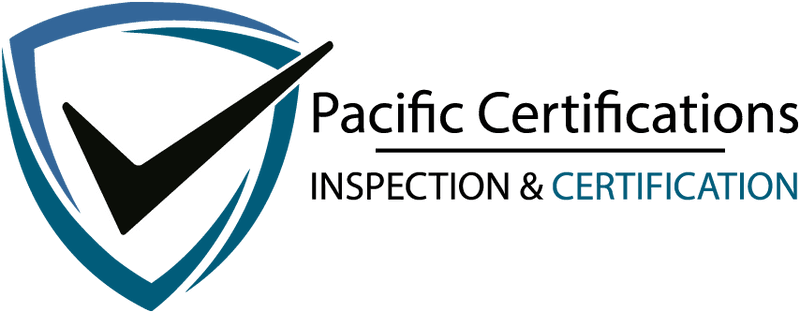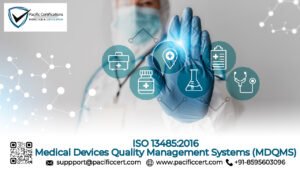What is ISO 10855-3:2018 Offshore Containers and Associated Lifting Sets – Periodic Inspection, Examination and Testing?
ISO 10855-3:2018 specifies the requirements for the periodic inspection, examination, and testing of offshore containers. And their also associated lifting sets used in the petroleum, petrochemical, and natural gas industries. Thus this standard ensures that offshore containers and lifting sets maintain their integrity, safety, and performance throughout their operational life.
ISO/DIS 10855-3 is part of a series of standards that include:
- ISO/DIS 10855-1: Addresses the design, manufacture, and marking of offshore containers.
- ISO/DIS 10855-2: Focuses on the design, testing, and marking of lifting sets.
- ISO/DIS 10855-3: Specifically targets the periodic inspection, examination, and testing of offshore containers and lifting sets.
Key Aspects of ISO 10855-3:2018
Scope and Application:
- This standard applies to all offshore containers and lifting sets, including those used for transporting goods, equipment, and also waste materials between offshore platforms and vessels.
- It covers both new and existing equipment, ensuring that all are maintained to a high standard of safety and reliability.
Inspection and Examination Requirements:
- Visual Inspection: Regular visual inspections are vital to identify any obvious signs of damage, wear, also corrosion that could compromise the safety of the containers and lifting sets.
- Nondestructive Testing (NDT): Techniques such as ultrasonic testing, magnetic particle inspection, and dye penetrant testing are used to detect internal and surface defects that are not visible to the naked eye.
- Load Testing: Periodic load tests are conducted to ensure the lifting sets can safely handle their rated loads without deformation or failure.
Documentation and Record Keeping:
- Detailed records of all inspections, examinations, and tests must be maintained, so this includes certificates, test reports, and any corrective actions taken.
- Proper documentation ensures traceability and accountability, so providing a clear history of the equipment’s condition and maintenance.
Compliance and Safety:
- Adhering to ISO 10855-3:2018 helps organizations comply with industry regulations and standards, thereby enhancing the safety of offshore operations.
- Regular inspections and testing help prevent accidents and equipment failures, protecting both personnel and assets.
How we can Help with ISO 10855-3:2018 Certification
At Pacific Certifications, we are dedicated to helping organizations achieve and maintain compliance with ISO 10855-3:2018. Our expertise and comprehensive services ensure that your offshore containers and lifting sets meet the highest standards of safety and reliability.
Our Services Include:
Certification and Auditing:
- We provide thorough auditing services to assess your compliance with ISO 10855-3:2018. Our experienced auditors conduct detailed inspections and examinations to verify that all requirements are met.
Training and Consultancy:
- Our expert consultants offer tailored training programs to educate your staff on the requirements and best practices for maintaining offshore containers and lifting sets. We also provide consultancy services to help you implement effective inspection and testing protocols.
Documentation Support:
- We assist in the preparation and maintenance of all necessary documentation, ensuring that your records are complete, accurate, and compliant with the standard’s requirements.
Continuous Improvement:
- Our ongoing support and guidance help you continually improve your inspection, examination, and testing processes. We work with you to identify areas for improvement and implement corrective actions to enhance safety and compliance.
With our support, you can be confident that your offshore containers and lifting sets are in full compliance with ISO 10855-3:2018. Our commitment to excellence and customer satisfaction ensures that you receive the highest quality services and support.
For more information or to get started with your certification process, contact us today at support@pacificcert.com. Let us help you achieve operational excellence and safety in your offshore operations!
What are the Requirements of ISO/DIS 10855-3?
The ISO/DIS 10855-3 standard outlines a comprehensive set of requirements for the periodic inspection, examination, and testing of offshore containers and associated lifting sets to ensure their ongoing safety and reliability. Here are the key requirements typically included in such a standard:
Periodic Inspection and Examination:
- Regular inspections are mandated to ensure the integrity and safety of the containers and lifting sets. The standard specifies the frequency of these inspections, which can vary based on operational conditions and previous inspection findings.
- Detailed examinations are required to assess visible structural elements, critical components, and potential areas of wear or damage.
Testing:
- Non-destructive testing (NDT) methods are often required to identify internal and surface flaws that could compromise the container’s integrity.
- Load testing might be prescribed to verify the strength and functionality of the container and lifting equipment under operational loads.
Maintenance and Repair:
- Guidelines for routine maintenance to prevent deterioration and failure. This includes repairs as per the original specifications to maintain certification standards.
- Records of all maintenance, repairs, and modifications need to be meticulously kept and reviewed during inspections.
Documentation and Certification:
- Documentation of inspections, tests, and maintenance activities must be up-to-date and available for review.
- Certification or re-certification processes are outlined for containers and lifting sets that have undergone repairs or significant maintenance.
Criteria for Removing Equipment from Service:
- Specific criteria that determine when a container or lifting set should be retired from active service due to safety concerns or beyond economical repair scenarios.
Responsibilities of Owners and Operators:
- Clear delineation of responsibilities regarding the upkeep, inspection, and compliance with safety standards to ensure the equipment is fit for purpose.
These elements work together to ensure that offshore containers and their associated lifting sets are maintained at a high standard of safety and also operational readiness, which is critical given the harsh environments they are typically used in. So the details of these requirements can vary slightly based on updates and revisions to the standards, reflecting advancements in technology and safety practices.
What are the Benefits of ISO/DIS 10855-3?
ISO/DIS 10855-3, as part of the ISO 10855 series focused on offshore containers and lifting sets, brings several significant benefits to industries also that operate in offshore environments. Here are some of the primary benefits:
Enhanced Safety:
By establishing rigorous standards for periodic inspections, testing, and maintenance, ISO/DIS 10855-3 helps ensure that offshore containers and lifting sets are maintained in a condition that maximizes safety for all operators and personnel involved, this reduces the risk of accidents due to equipment failure.
Increased Reliability:
Regular and systematic inspections and testing ensure that equipment remains reliable over its operational lifespan. Thus this reliability is crucial in offshore operations where failures can have severe implications, including operational downtime and financial losses.
Compliance with Regulations:
Adhering to an internationally recognized standard helps organizations comply with local and international safety regulations. Compliance can often facilitate smoother operations across different jurisdictions and enhance the organization’s reputation with regulatory bodies.
Operational Continuity:
With a focus on maintaining equipment in optimal working condition, ISO/DIS 10855-3 helps minimize unplanned downtime due to equipment breakdown, This supports continuous operation and efficiency, which are critical in the high-stakes environment of offshore operations.
Cost Management:
By preventing major failures through routine maintenance and early detection of potential issues, significant costs associated with major repairs or accidents can be avoided, Moreover, the standard helps extend the service life of expensive offshore equipment, offering better return on investment.
Enhanced Reputation:
So companies that comply with international standards are often viewed as more reliable and committed to quality and safety. Thus this can enhance an organization’s reputation within the industry, with clients, and with stakeholders.
Legal Protection:
Implementing and following international standards can provide a degree of legal protection or mitigation in the event of an accident, as it demonstrates a commitment to adhering to recognized safety protocols.
Overall, ISO/DIS 10855-3 contributes to a culture of safety and operational excellence in offshore activities, ensuring that both equipment and personnel are safeguarded against the unique challenges posed by such environments. Thus this proactive approach to safety and maintenance is crucial for maintaining the viability and sustainability of operations in offshore settings.
Who Needs ISO/DIS 10855-3?
ISO/DIS 10855-3 is essential for several key groups involved in the offshore industry, where safety, reliability, and also compliance with international standards are critical. Here’s who needs this standard:
Offshore Oil and Gas Companies:
Companies involved in the extraction, production, and processing of oil and gas offshore heavily rely on containers and lifting equipment. These companies need the standard to ensure that their operations are safe, reliable, and compliant with regulations.
Offshore Wind Energy Operators:
As the offshore wind industry expands, the use of containers for maintenance, repairs, and operations at sea is increasing. Operators in this sector need to follow these standards to manage and maintain their equipment effectively in harsh marine environments.
Maritime Transport Providers:
Companies that provide maritime transport for goods and equipment to and from offshore locations use containers that must be safely and securely handled, So ISO/DIS 10855-3 helps ensure that these containers and their lifting sets are suitable for the rigors of offshore use.
Shipping Container Manufacturers:
Manufacturers who design and produce containers specifically for offshore use need to adhere to this standard to ensure their products are robust, durable, and compliant with international safety standards.
Certification and Inspection Bodies:
Organizations that offer inspection and certification services for offshore equipment use this standard as a guideline for their operations, so ensuring that all equipment they certify meets global safety and performance criteria.
Engineering and Construction Firms:
Firms involved in the construction of offshore structures, including platforms and rigs, often use containers and lifting equipment. Thus these standards guide them in choosing and maintaining equipment that can withstand the environmental conditions.
Health, Safety, and Environmental (HSE) Managers:
HSE managers in any industry that uses offshore containers need to ensure that all operations comply with safety standards. So ISO/DIS 10855-3 provides them with a framework to establish safety protocols and maintenance schedules.
Offshore Logistics and Supply Chain Managers:
So those managing logistics and supply chains that involve offshore operations will require adherence to this standard to ensure the safe and efficient transport of materials and equipment.
By following ISO/DIS 10855-3, these groups can help prevent accidents and equipment failures, ensure compliance with international safety standards, and maintain high operational standards in the challenging offshore environment.
Pacific Certifications is accredited by ABIS, in case you need support with ISO/DIS 10855-3 certification for your business, please contact us at suppport@pacificcert.com or +91-8595603096







